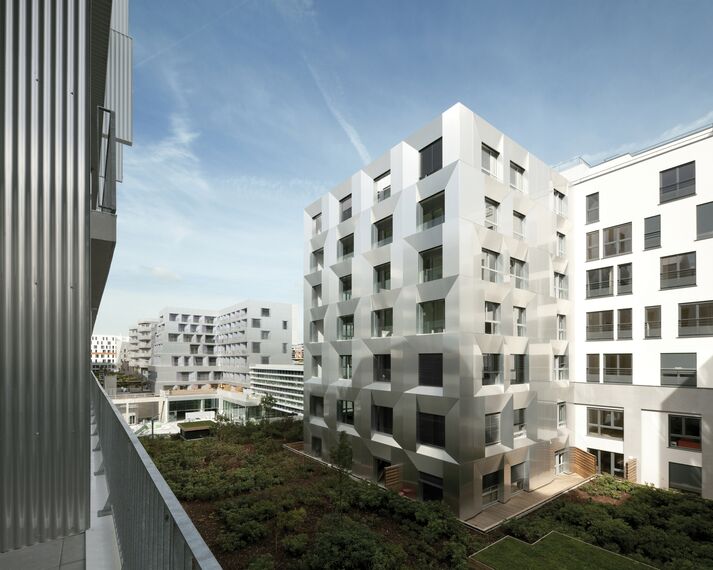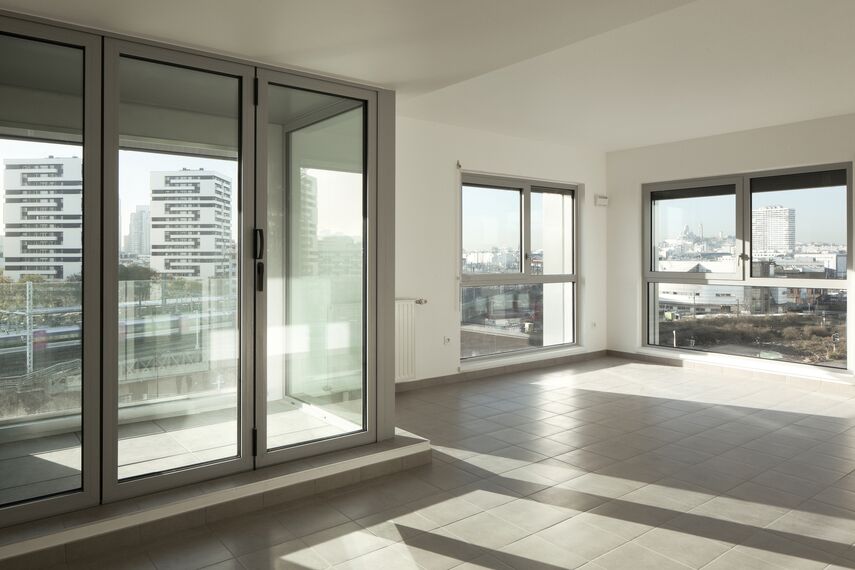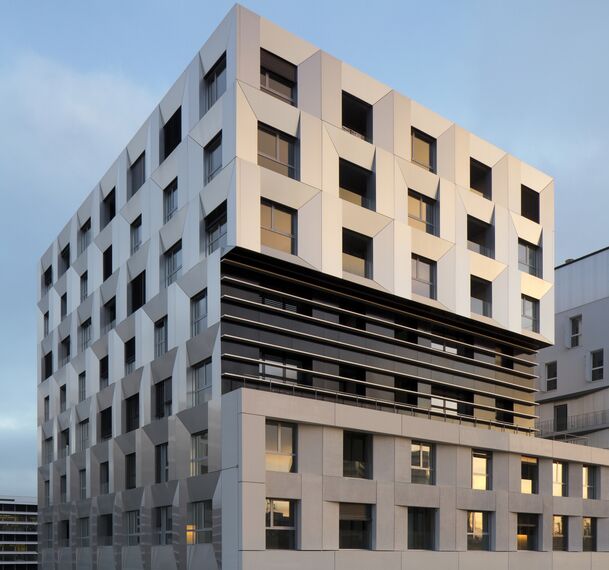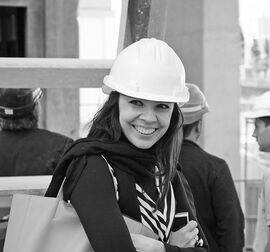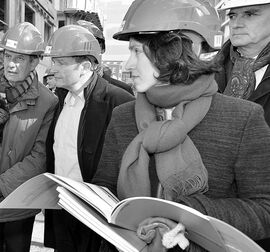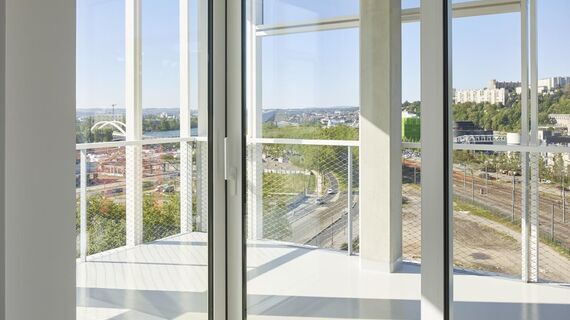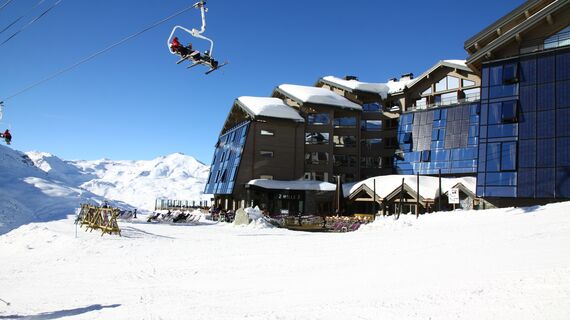- XDGA + FAA
- OMA (Office for Metropolital Architecture)
Macdonald warehouse - Lot N5 and S6
The 617-meter long Macdonald Warehouse could have blocked the renewal of the area on the edge of Paris. Instead, it became a catalyst of a vibrant, contemporary neighbourhood in the making.
One of Europe’s most densely built cities, Paris still needs thousands of new homes. As a result, attention turns to previously neglected land, notably the areas cut off from the rest of the city by industrial facilities and infrastructural networks. In 2001, the Council of Paris included a number of such enclaves in its Grand Urban Renewal Project.
The 200-hectare Paris Nord-Est sector was a mix of transport arteries, logistics and industrial premises with social housing and a few public facilities. The Macdonald Warehouse, Paris’s longest logistics building designed by Marcel Forest in 1970, was among the ‘urban barriers’ that caused the area’s isolation. The moment it was put up for sale in 2006, the city teamed up with the Caisse des Dépôts, its historic partner for investments in public interest projects, to repurpose the warehouse into a micro-urban complex with 1126 homes, as well as offices, schools, and retail stores gathered on 210.000 square metres.
“The scheme has a direct influence on the entire area; it enables everything that is happening in the neighbourhood”, says Camille Picard, the Managing Director of ParisNordEST at the Caisse des Dépôts, the company in charge of the project. “Without it, the construction of a new development zone across the street wouldn’t have started as they would struggle to sell flats and offices looking out on a warehouse.”
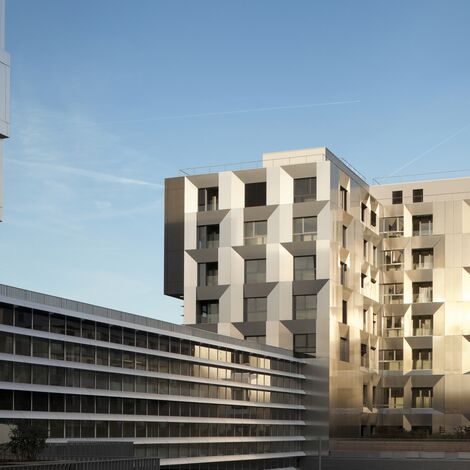
The extraordinary length of the original volume is complemented with a host of plug-over structures
Dynamic place
When fully operational, the ‘Macdo’ will account for most of the programs necessary to transform Paris Nord-Est into a dynamic and desirable place. It has already sped up the construction of a new rapid transit station, and enabled the extension of the tramway line, which now cuts straight through the building.
The masterplan by renowned architectural firm OMA (Office for Metropolitan Architecture) and FAA (Floris Alkemade Architect) retained the extraordinary length of the original volume and complemented it with a host of plug-over structures to add contemporary scale and diversity. The client appreciated its remarkable flexibility: “We presented eight solutions to show that different options were possible within the same program,” explains Alkemade, who, together with architect Xaveer De Geyter from XDGA, deals with the overall project coordination. “After winning the competition, we kept the basic principle, but started from scratch and developed a scheme that integrated all of the client’s needs and all the regulations.”
Challenged to coordinate fifteen architectural firms responsible for specific plots, the team devised a set of rules to ensure a balance of unity and creative freedom. Moreover, with the residential part divided 50-50 between social and private housing, it was crucial to establish aesthetic standards to ensure no visible distinction between public and private.
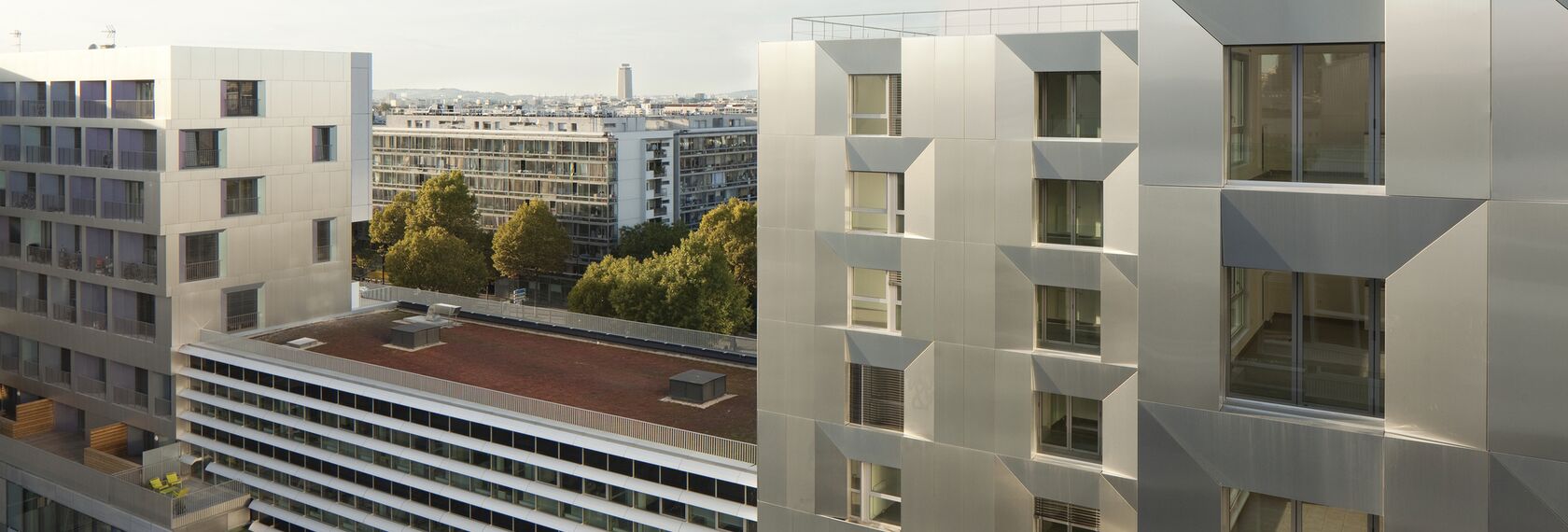
FAA + XDGA architects designed the N5 and S6 buildings, including the bridge building over the tram tracks
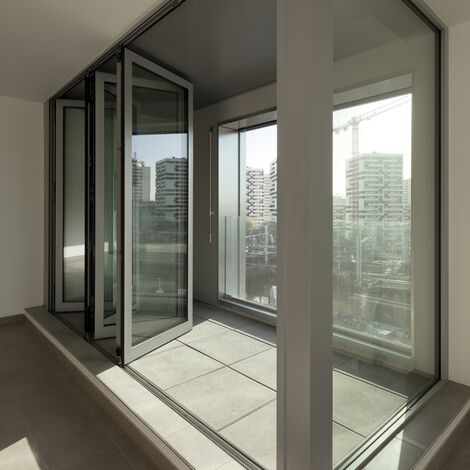
CF 77 is used for ceiling-high, foldable doors that allow living spaces to merge with balconies
Simple yet strong solution
FAA and XDGA designed the pleated façade for the entire ground floor; the ‘bridge building’ over the tram tracks, the exterior spaces and two blocks of assisted rental housing at the corners of the internal square. “Seeking a simple yet strong solution, we developed a single pattern for both blocks, with three-dimensional panelling that reflected the sky and added depth to the façade,” comments architect Milena Wysoczynska, project manager at Paris-based XDGA-FAA.
Performance, costs and technical evaluation were the key factors in specifying a number of products by Reynaers. The CF 77 system, whose folding elements with hidden gaskets create a particularly clean appearance, proved most efficient and aesthetically correct for ceiling-high, foldable doors that allow merging living spaces with loggias. On the other hand, the sober design of generous XS 68 windows integrates perfectly with the rhythmically extruded façades.
Milena Wysoczynska is German and was born in 1976 in Poland. She is a graduate of the Braunschweig University of Technology in Germany, with one year abroad at the Architectural School Paris-Villemin in France, Milena worked at several European architectural firms, including OMA. Since 2008, she takes charge of the Parisian branch of Floris Alkemade Architect + Xaveer de Geyter Architects. As the Project Manager of the Macdonald Warehouse, to be delivered in 2016, she supervises the urban project and coordinates the work of 15 participating architectural teams on their 23 projects. “Life is too short to waste it on bad projects”, is her motto.’
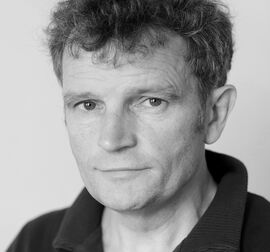
Floris Alkemade was born in 1961 in the Netherlands and graduated from Delft University of Technology. He worked eighteen years at OMA were he was one of the directors/ partners since 2001. In 2008, Alkemade started his own practice. Currently FAA is working on the reconversion of the Macdonald Warehouse, and also on a housing project in the Parisian suburb of Boulogne Billancourt with Béal-Blanckaert and for the new development zone around Les Ardoines, one of the future stations of the Grand Paris Express. As of September 2015, he combines work at FAA with the function of the Chief Government Architect for the Netherlands (Rijksbouwmeester). He quotes Plato’s ‘everything is becoming, nothing is’ as his motto.
Camille Picard was born in France in 1978. Picard studied urban economics at the ESSEC business school (France) and Bocconi University (Italy). She has a Master’s degree in political science from the Sorbonne, and a Master’s in urban planning from Sciences Po. Since 2012, Picard is the Managing Director at the SAS ParisNordES T created by the Caisse des Dépôts, for which she also is the Complex Project Manager. The investor largely contributes to the territory development as it manages popular savings and uses these to finance public interest projects (social housing; transportation, etc). Her credo is “Set the bar high from the start, and never lower it beneath that level.”
Used systems
Involved stakeholders
Fabricator
- Alu Concept
Photographer
- Eric Sempé
Other stakeholder
- XDGA + FAA (Project managers)
- Caisse des Dépôts (Investors)
- Sicra (General contractors)
- Anna Yudina (Authors)

